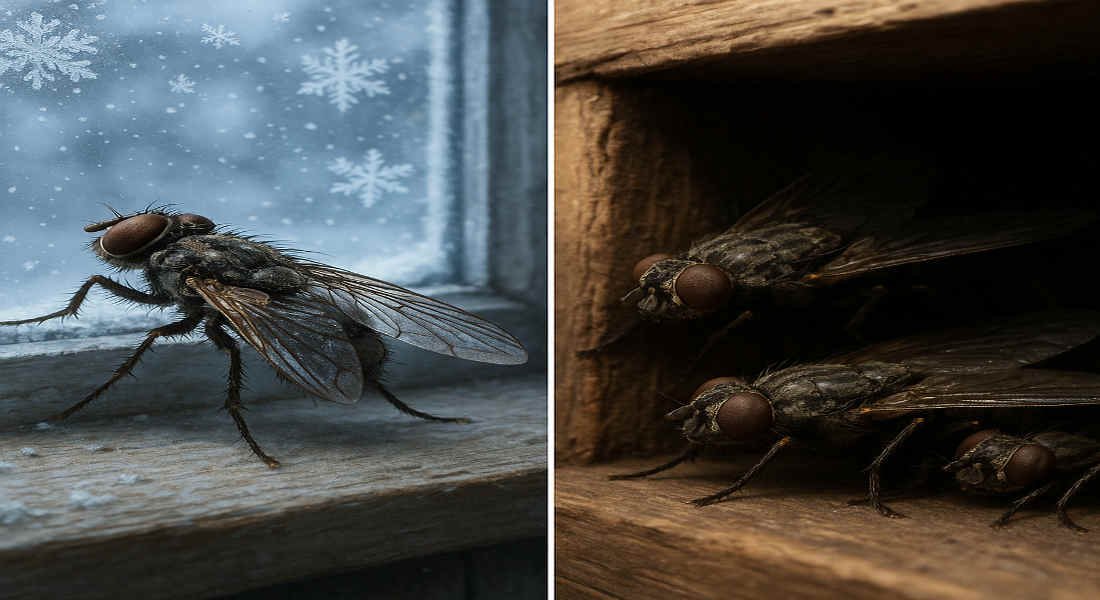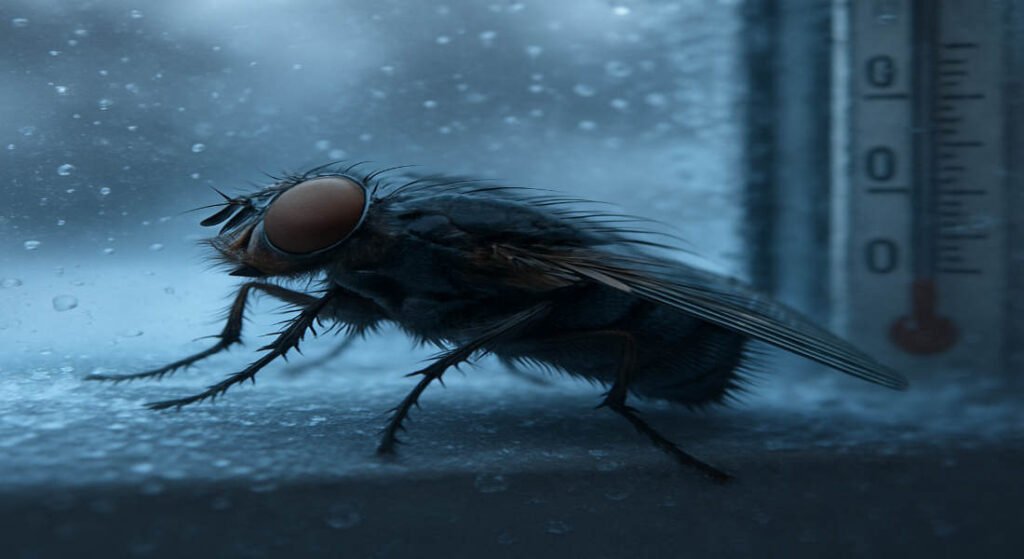House flies, often seen as mere nuisances, have a fascinating survival strategy that allows them to endure the cold winter months. Unlike many insects that perish or remain active, house flies enter a hibernation-like state called diapause, seeking refuge in hidden indoor spots such as cracks, crevices, and folds of curtains. During this period, they significantly slow their metabolism and rely on stored fat to survive the cold, emerging again when temperatures rise and indoor heating resumes. This surprising ability to “hibernate” indoors not only helps them survive winter but also enables them to restart their life cycle as soon as warmth returns, making them persistent and resilient household pests year-round.
The Misconceptions About House Fly Hibernation
This misconception is quite common, but it’s not accurate.
Unlike some insects that enter a deep sleep-like state, house flies adapt to changing temperatures in different ways. They don’t truly hibernate; instead, they can be active during milder winters.
In reality, some may find shelter indoors where conditions are warmer and more stable.
This leads many to think they vanish entirely until spring returns. Instead, these resilient little creatures often remain hidden in our homes or other sheltered areas.
Understanding their behavior helps us manage them better during colder seasons. When we debunk myths about their habits, we gain valuable insights into how to keep our living spaces fly-free.
How House Flies Survive Winter
House flies don’t truly hibernate like some other insects. Instead, they enter a state called diapause. This is more about survival than sleep.
During colder months, adult houseflies seek shelter in warm places. They often find refuge inside homes, barns, or any structures that offer protection from the cold. In these hidden spots, their metabolism slows down significantly.
While in diapause, house flies can withstand extreme temperatures. Their bodies produce glycerol—a natural antifreeze—helping them to survive chilly conditions without freezing solid.
As the weather outside gets warmer, these resilient little creatures emerge from their hiding spots. With rising temperatures and longer days signaling spring’s arrival, the cycle of life begins again for them!
You may also read (do indoor plants improve your homes smell).
The Role of Temperature in House Fly Hibernation
Temperature plays a crucial role in the behavior of house flies, particularly in their winter survival strategies. Unlike many insects that truly hibernate, house flies enter a state known as diapause. This is more about slowing down than getting a deep sleep.
As temperatures drop, typically below 50°F (10°C), house flies become less active. They seek out sheltered spots where they can remain hidden from the cold and predators. Warmer indoor environments allow them to wake up and resume normal activity levels.
When exposed to cold for extended periods, their metabolism slows significantly. This helps conserve energy until conditions are favorable again. Flies won’t “hibernate” like bears do; instead, they adapt based on temperature fluctuations around them.
Understanding how temperature affects these pests can help homeowners effectively manage their presence during colder months.
Other Factors That Affect House Fly Hibernation
House flies are influenced by more than just temperature when it comes to their survival tactics. Humidity also plays a significant role. High humidity levels can help them retain moisture, which is crucial during colder months.
Light exposure is another factor that can’t be overlooked. Flies often respond to changes in daylight hours, signaling the shift toward winter and prompting their hibernation behaviors.
Food availability also affects their state of dormancy. If there is an abundant supply of food sources, such as decaying matter or organic waste, house flies may delay entering hibernation until those resources dwindle.
Sudden warmth from indoor heating systems might lure them out sooner than expected.
Genetic factors also play a role; some fly species have evolved specific adaptations for surviving harsh winters compared to others. Each detail contributes uniquely to how they navigate seasonal challenges.
You may also read (do ticks really come inside the house).
Interesting Facts About House Flies and Hibernation
House flies are fascinating creatures with a remarkable ability to adapt. Did you know that adult house flies can live up to 15 days in optimal conditions? Their lifespans vary based on temperature and food availability.
These insects enter a state known as diapause during colder months. This isn’t true hibernation but rather a pause in development triggered by changes in light and temperature.
Interestingly enough, female houseflies can lay hundreds of eggs at once. This reproductive strategy helps ensure the survival of their species, even if many perish during harsh winters.
Their taste buds are located on their feet! This unique adaptation enables them to sample surfaces before consuming anything.
Although they are pests, these creatures play essential roles in ecosystems as decomposers and pollinators.
Tips for Keeping House Flies Out of Your Home During Winter
To keep house flies out of your home during the winter months, it’s essential to take proactive measures. First, sealing any cracks and gaps around windows and doors can significantly reduce the number of entry points. Use weather stripping or caulk for added protection.
Regular cleaning is also key. Flies are attracted to food residues, so ensure countertops and floors are free from crumbs and spills. Store food in airtight containers to deter any potential visitors.
Consider using natural repellents, such as essential oils like peppermint or eucalyptus. These scents can act as deterrents for flies while leaving your space smelling fresh.
If you have pets, maintaining a clean environment is even more critical, as pet food can also attract flies; regularly wash bowls and remove uneaten food promptly.
Using screens on windows and doors will help keep unwanted insects outside while allowing fresh air into your home. With these strategies in place, you’ll create an inhospitable environment for house flies this winter season.
You may also read (do mice really avoid houses with cats).

